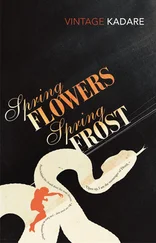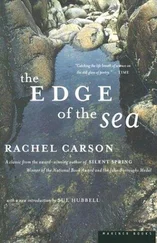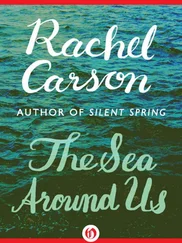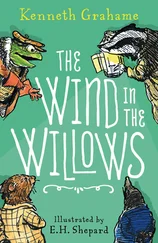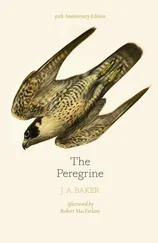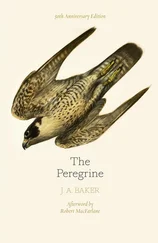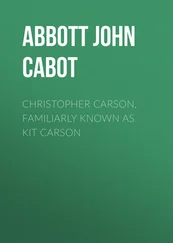Heimpel, A. M., and T. A. Angus, “Bacterial Insecticides,” Bacteriol. Rev., Vol. 24 (1960), No. 3, pp. 266–88.
Briggs, John D., “Pathogens for the Control of Pests,” Biol, and Chem. Control of Plant and Animal Pests. Washington, D.C., Am. Assn. Advancement Sci., 1960. Pp. 137–48.
“Tests of a Microbial Insecticide against Forest Defoliators,” Bi-Monthly Progress Report, Canada Dept. of Forestry, Vol. 17, No. 3 (May–June 1961).
Steinhaus, “Living Insecticides.”
Tanada, Y., “Microbial Control of Insect Pests,” Annual Rev. Entomol., Vol. 4 (1959), pp. 277–302.
Steinhaus, “Concerning the Harmlessness of Insect Pathogens.”
Clausen, C. P., Biological Control of Insect Pests in the Continental United States. U.S. Dept. of Agric. Technical Bulletin No. 1139 (June 1956), pp. 1–151.
Hoffmann, C. H., “Biological Control of Noxious Insects, Weeds,” Agric. Chemicals, March–April 1959.
DeBach, Paul, “Biological Control of Insect Pests and Weeds,” Jour. Applied Nutrition, Vol. 12 (1959), No. 3, pp. 120–34.
Ruppertshofen, Heinz, “Forest-Hygiene,” address to 5th World Forestry Congress, Seattle, Wash. (Aug. 29–Sept. 10, 1960).
___, To author, Feb. 25, 1962.
Gösswald, Karl, Die Rote Waldameise im Dienste der Waldhygiene. Lüneburg: Metta Kinau Verlag, n.d.
___, To author, Feb. 27, 1962.
Balch, R. E., “Control of Forest Insects,” Annual Rev. Entomol., Vol. 3 (1958), pp. 449–68.
Buckner, C. H., “Mammalian Predators of the Larch Sawfly in Eastern Manitoba,” Proc., 10th Internatl. Congress of Entomologists (1956), Vol. 4 (1958), pp. 353–61.
Morris, R. F., “Differentiation by Small Mammal Predators between Sound and Empty Cocoons of the European Spruce Sawfly,” Canadian Entomologist, Vol. 81 (1949), No. 5.
MacLeod, C. F., “The Introduction of the Masked Shrew into Newfoundland,” Bi-Monthly Progress Report, Canada Dept. of Agric., Vol. 16, No. 2 (March–April 1960).
___, To author, Feb. 12, 1962.
Carroll, W. J., To author, March 8, 1962.
Afterword
by Edward O. Wilson
FORTY YEARS AGO, Silent Spring delivered a galvanic jolt to public consciousness and, as a result, infused the environmental movement with new substance and meaning. The effects of pesticides and other toxic chemical pollutants on the environment and public health had been well documented before Silent Spring, but in bits and pieces scattered through the technical literature. Environmental scientists were aware of the problem, but by and large they focused only on the narrow sector of their personal expertise. It was Rachel Carson’s achievement to synthesize this knowledge into a single image that everyone, scientists and the general public alike, could easily understand.
The need for such a book was great even within the sciences. As the mild-mannered aquatic biologist was researching Silent Spring, ecology was near the bottom of the scientific disciplines in prestige and support; few Americans even knew what the world meant. Conservation biology, later to become one of the most rapidly growing disciplines, did not exist. At the rime, the scientific culture was fixated on the spectacular success of the molecular revolution, which had placed physics and chemistry at the foundation of biology. Researchers were learning to reduce living processes to their molecular elements. I, for example, as a young naturalist trained in field biology, was busy collaborating with organic chemists to break the code of pheromones used by ants to organize their colonies.
The environment was also excluded from the mainstream political agenda. America in the late 1950s and early 1960s was an exuberant and prospering nation. Buoyed by record peacetime economic growth, an ethic of limitless progress prevailed, yet the country, locked in a cold war that threatened our way of life, was vulnerable to the formidable enemies that encircled us. The Soviet Union had matched the United States in nuclear weaponry and beaten us into space, and on the Asian mainland China held us at a military standstill. For the sake of our prosperity and security, we rewarded science and technology with high esteem and placed great trust in the seeming infallibility of material ingenuity. As a consequence, environmental warnings were treated with irritable impatience. To a populace whose forebears had within living memory colonized the interior of a vast continent and whose country had never lost a war, arguments for limit and constraint seemed almost unpatriotic.
The temper of the times was epitomized by the concept of the peaceful use of atoms, which culminated in federal plans to excavate harbors and waterways with low-yield nuclear explosions. One such proposal seriously considered by engineers was the instant construction of a sea-level channel parallel to the Panama Canal with a string of precisely timed detonations. Fortunately, that particular dream never left the drawing board. Aside from the foreign policy complications inherent in cutting a Central American country into two pieces, there was a biological risk. The U.S. National Research Council committee reviewing the plan (on which I served as a junior member) raised a warning hand. We pointed out that organisms living in the shallow waters of the eastern Pacific are very different from those in the Caribbean. The two faunas, having evolved independently of each other for millions of years while separated by the intervening Panamanian isthmus, would now be mingled by currents flooding from the Pacific side. Among the many unfortunate likely results would be the invasion of the Caribbean waters by poisonous sea snakes as well as by sea wasps, a form of stinging jellyfish.
A second example of national impetuosity I happened to witness was the U.S. Department of Agriculture’s fire ant eradication program. Rachel Carson was to label it, in Silent Spring, “an outstanding example of an ill-conceived, badly executed, and thoroughly detrimental experiment in the mass control of insects, an experiment so expensive in dollars, in destruction of animal life, and in loss of public confidence in the Agriculture Department that it is incomprehensible that any funds should still be devoted to it.”
The target of this fiasco was the red imported fire ant ( Solenopsis invicta ), which had been introduced into the port of Mobile, Alabama, most likely in cargo shipped from Argentina. Its colonies, each containing several hundred thousand very aggressive workers, construct soil nests surmounted by mounds as much as a foot high. The name fire ant comes from its sting, which feels like a burning match held too close to the skin. The exact time of the establishment of the species in the United States is not known, but was probably sometime in the 1930s. By rare coincidence I was the first person unofficially to record its presence. In 1942, as a thirteen-year-old Boy Scout studying ant species around my home near the Mobile docks, I discovered a single well-developed colony of red imported fire ants. Seven years later, when the species had become abundant enough to rank as a local pest, I was hired by the state of Alabama to make the first thorough study of its habits and distribution. I found that the ants were spreading radially outward from Mobile at the rate of about five miles a year and had already reached the borders of Florida and Mississippi. By continuing this advance, and also by hitchhiking in nursery and farm products, they were destined to spread during the next several decades throughout the South from the Carolinas to Texas.
The red imported fire ant was and remains a serious nuisance. Its stings are unpleasant, and on rare occasions the venom triggers fatal anaphylactic shock. The teeming workers have been known to attack seedling corn and other crops as well as the hatchlings of ground-nesting birds. Its mounds are large and numerous enough to interfere with the operation of farm machinery. Yet it was never an economic pest in the same class as the boll weevil, gypsy moth, European corn borer, and other destructive insects.
Читать дальше


